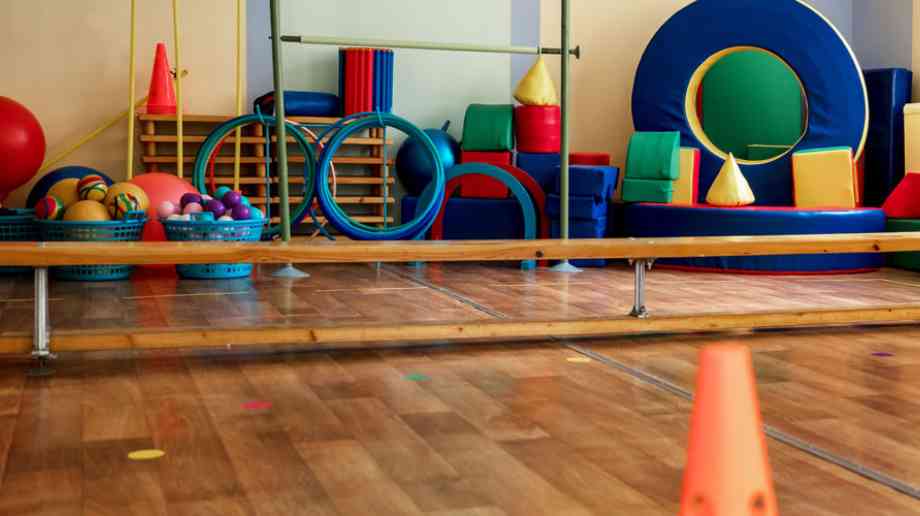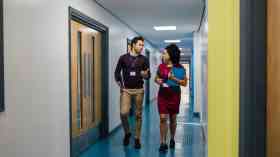
The crisis of school buildings and facilities
A recent report from BESA confirmed a real problem with the school estate, and uniquely, delved into every aspect of school buildings, such as the quality of PE equipment and music facilities. Robyn Quick summarises what needs to improve
A school should be a place where young people can thrive and learn in a safe environment. The Department for Education (DfE) recorded in 2022 that there were over 9.1 million pupils to look after in schools across the UK, each of whom is entitled to learning in a well-maintained school environment. However, around 700,000 pupils are attending schools in major rebuilding or refurbishment.
This statistic comes from the National Audit Office’s report into the condition of school buildings. The report’s shocking findings then prompted the British Educational Suppliers Association (BESA) to commission a special survey into the condition of more than 900 schools.
It revealed even more issues with school buildings across the country. The survey was unique in that it looked at almost every aspect of school buildings, such as the quality of PE equipment and music facilities.
The DfE said they have allocated £15 billion since 2015 to make sure school buildings are in good condition. Most of the funds are given to local authorities, large multi-academy trusts, and large voluntary aided school groups, to invest in maintaining and improving the condition of their schools.
Despite this continued maintenance, however, BESA’s survey shows there are a large number of teachers who report working in under maintained schools. You can read the full report here, but these are the key findings that stood out in the survey.
STEM
Science, Technology, Engineering and Mathematics (STEM) facilities were one of the worst to come out of the survey, with one third of schools reporting that the current level of investment in STEM facilities was harming learning outcomes.
These kinds of scientific environments are often more specialist than your average classroom, and need a lot more monitoring. The survey also found that over 80 per cent of science teachers are concerned about the level of investment in STEM facilities.
The Association of Science Education said the lack of investment into these facilities will “directly and negatively impact the effectiveness of science teaching and learning.” They added that it means students are often not able to access hands-on learning experiences as much as they should be able to.
“This research suggests that these benchmarks are not being met in schools across the country and as such, paints a bleak picture for the future of science education in the UK,” they commented.
SEND
Nasen reported in 2023 that there are over 1.5 million children in UK schools who have been identified as having SEND. This means they have special educational needs and disabilities, and includes a large range of conditions and abilities.
Over 80 per cent of schools said they need specially adapted physical education facilities, but do not have them. If SEND children cannot participate fully in physical education, it can have a profound impact on their sense of independence and level of confidence.
It is not just in physical education that the survey found a disparity between SEND and their non-disabled peers. There is also a need for over half of schools to have specialised classrooms and therapy rooms for children with SEND. Most of the leaders at these schools want to introduce these, but simply cannot afford it.
Seventy per cent of SEND teachers are worried about current levels of investment. A lack of investment affects all aspects of a child with SEND’s experience at school. If a student uses a wheelchair or mobility scooter, for example, a ramp will usually be required to get into some buildings. BESA, however, found that almost 30 per cent of schools have concerns with accessibility features.
Very few schools described any of their SEND facilities as “well resourced” with less than 20 per cent of schools indicating that their facilities for SEND were in a good state of repair.
Music and art
Almost 40 per cent of secondary schools reported having inadequate music facilities. A positive finding in the survey was that primary schools are largely happier with the music department compared to secondary skills, but this could be attributed to the fact that the former requires less complicated kit.
Music Mark, a membership organisation focused on fostering an environment for excellent musical learning, said these statistics are “deeply concerning.” They said: “High quality facilities are an essential part of any child’s music education, they create space for children and young people to create, experience, and be transformed. The National Plan for Music Education sets out a vision for the power of music to change lives, where “Music must not be the preserve of the privileged few.”
The report also found that over 40 per cent of schools have inadequate music facilities.
On the Art and Graphic Design side of the coin, 40 per cent of schools reported issues with their facilities. While most secondary schools have a dedicated art and design facility less than 15 per cent consider it to be well resourced and in a good state of repair.
Michel Gregson, the CEO for the National Society for Education in Art and Design (NSEAD), said that “teachers are telling us that art and design facilities are under-resourced, poorly maintained, and in some cases non-existent.
“So much learning in art and design is through practical experience, working with materials and specialist equipment to develop skills and understanding of a range of processes and disciplines. Pupils need access to well-equipped studios and classrooms. Pupils need the resources to support learning through making, but also access to digital devices, which are an essential part of learning in the subject.”
Communal spaces
The term ‘communal spaces’ includes a wide range of facilities, including but not limited to bike storage spaces, bus services, playgrounds, school halls and outdoor sheltered areas.
Almost 40 per cent of schools have reported issues with the communal areas. Libraries and dance spaces were most likely to be marked as “excellent” or “good” by staff, but passageways and corridors ranked the worst. Around 65 per cent of staff said these areas were below adequate.
The staff room
BESA did not just survey spaces used by students; the school staff room also gets a look-in. They found that 35 per cent of respondents did not have a quiet space for staff to relax.
Having this kind of space to unwind between classes and teaching is essential to the well-being of staff. The staff rooms appear to have adequate furniture, but the actual use of space seems to be an issue for many. Almost 70 per cent of respondents said the room is not large enough for school staff.
These spaces are often where teachers socialise with others, or just unwind a little. BESA said it was “concerning” to see these spaces underfunded.
Working towards a better situation
Reading through these statistics can make the situation seem hopeless.
Caroline Wright, director general of BESA, said that the entire school estate would take over 400 years to rebuild, a figure which is clearly infeasible.
However, there were positive findings in the survey. For example, over 90 per cent of schools described their internet connection as reliable or better. As well as this, over 40 per cent of secondary schools now have a dedicated electronics workshop.
Most decisions to improve school buildings fall to the government and local authorities. We know there will always be staff, students, parents and carers who are dedicated to making sure that schools are providing that safe space to learn and thrive.
Latest News
18/11/2025 - 09:28
Education Support, the charity dedicated to the mental health and wellbeing of teachers and education staff, has released its ninth Teacher Wellbeing Index.
17/11/2025 - 09:26
Nearly two thirds of Initial Teacher Training providers believe that teachers are not currently prepared to meet the government’s ambition to raise the complexity threshold for SEND pupils entering mainstream schools.
14/11/2025 - 11:04
England’s councils are warning of a "ticking time bomb" in the special educational needs and disabilities (SEND) system, with new data showing deficits that could bankrupt local authorities within three years.
13/11/2025 - 12:14
Event for school leaders, governors and education professionals relocates to the historic Old Billingsgate venue in London.
13/11/2025 - 09:49
The regulations have been set following a second consultation and detailed collaborative working with organisations and people across deaf and hearing communities.







